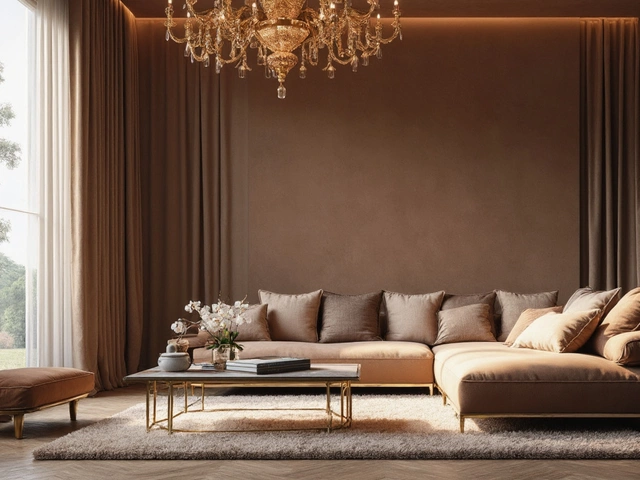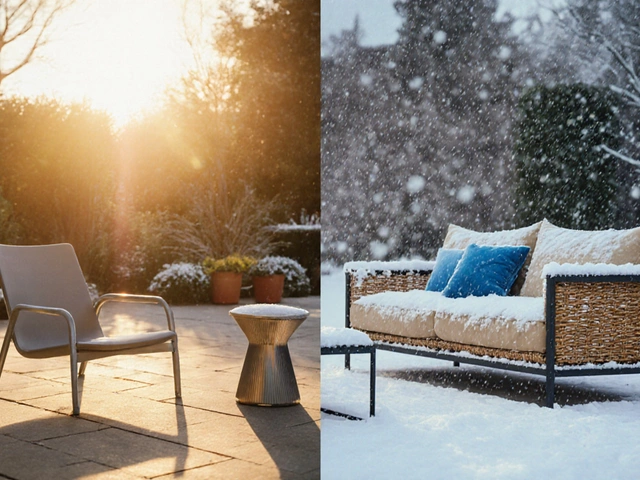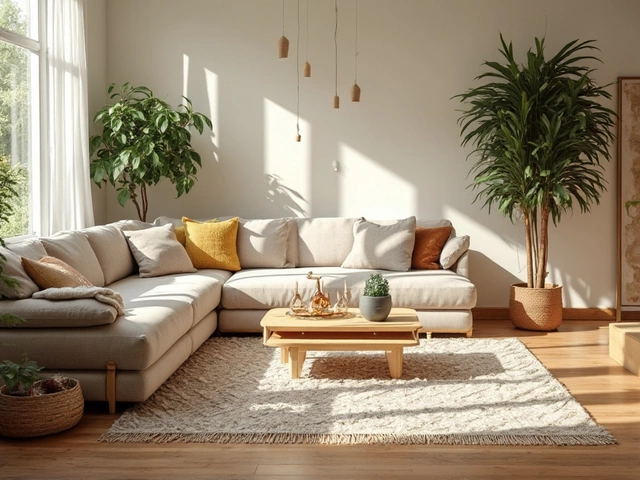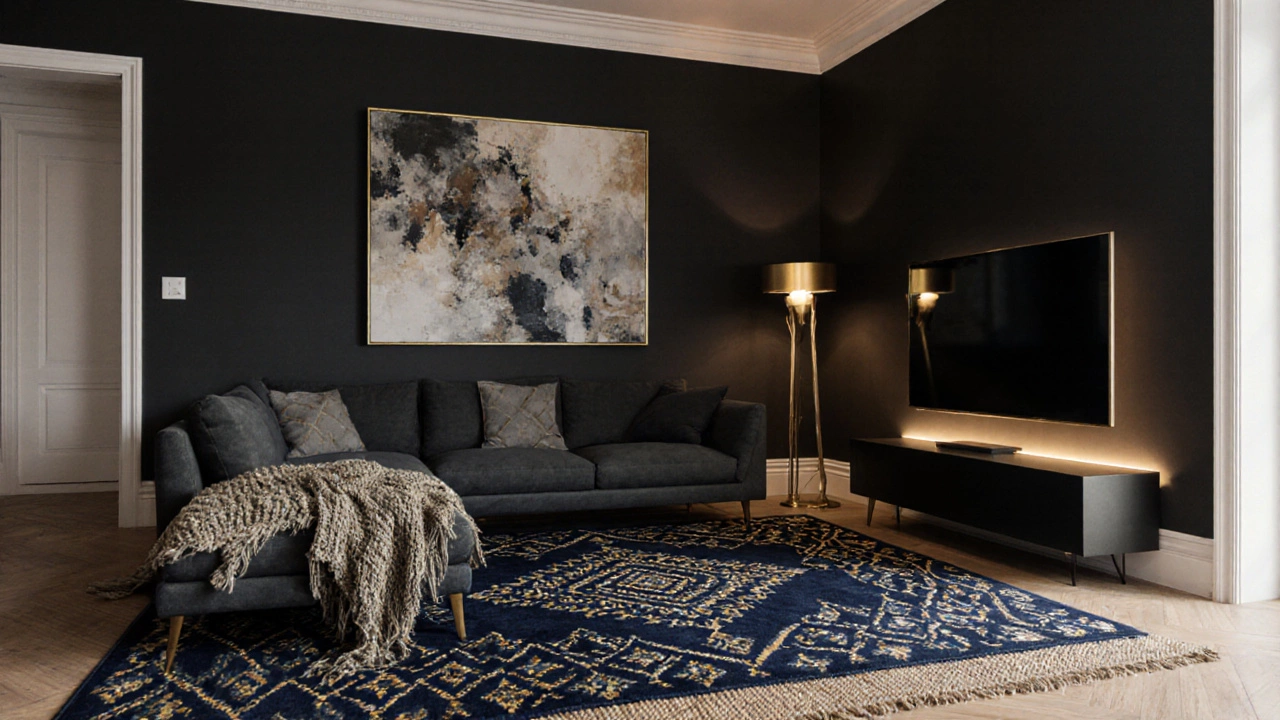
Living Room Pop Assessment Tool
Take this quick assessment to see if your living room is ready to pop. Answer based on the 5-minute pop test from the article.
1. Does your rug anchor the space?
Does it sit under the front legs of your sofa/chairs? Is it large enough (9x12 for medium rooms)?
2. Do your walls add depth and mood?
Are they a neutral backdrop or do they add richness (e.g., dark accent wall)?
3. Do you have layered lighting?
Is there at least one lighting source that isn't the ceiling fixture?
4. Is there one piece of art that makes you pause?
Is there a statement piece above your sofa or focal point?
5. Can you see texture without touching?
Are there at least two distinct textures (e.g., velvet sofa, jute rug)?
Your Living Room Pop Assessment
Most people think making their living room pop means buying expensive furniture or hiring a designer. But the truth? It’s not about the price tag-it’s about the punch. A living room that grabs attention doesn’t need a full renovation. It just needs the right mix of contrast, texture, and intention. You don’t need a million dollars. You need one bold rug, one statement light, and the courage to leave space empty.
Start with the floor-your biggest canvas
The floor is the foundation of your living room’s personality. A flat, beige carpet or dull hardwood does nothing. It fades into the background. What you want is something that pulls your eyes down and holds them there. A large, patterned rug-think geometric, Moroccan, or even a bold solid with deep tones like navy, emerald, or burnt orange-changes everything.
Size matters. Too small, and it looks like an afterthought. Your rug should sit under the front legs of your sofa and chairs. If you have a sectional, make sure at least the front two-thirds are covered. A 9x12 rug in a medium-sized room is the sweet spot. Brands like Ruggable or Safavieh offer durable, washable options that still look high-end. Skip the thin, synthetic rugs. Go for wool, jute, or a wool-silk blend. The texture adds depth, and the natural fibers make the space feel alive.
Paint the walls like you mean it
White walls are safe. But they’re also silent. If your living room feels flat, the walls are probably the reason. Don’t be afraid to go dark. Deep charcoal, forest green, or even a moody teal can make your space feel like a cozy, luxurious cave-especially in Wellington’s overcast winters.
Try Benjamin Moore’s Black Fox or Farrow & Ball’s Green Smoke. These aren’t just colors-they’re moods. Paint one accent wall if you’re nervous. Or go all-in. Pair dark walls with bright trim (white or cream) and you instantly create contrast that pops. Add warm-toned lighting, like brass or copper fixtures, and the room doesn’t feel heavy. It feels intentional.
Lighting isn’t just for seeing-it’s for feeling
Overhead lights are functional, not atmospheric. If your living room only has one ceiling fixture, you’re missing half the story. Layer your lighting: ambient, task, and accent.
Start with a statement pendant or floor lamp. A sculptural floor lamp with a fabric shade in a warm tone casts soft, inviting light. Place one beside your reading chair. Add table lamps on side tables-not just for reading, but to break up the visual weight of your furniture. And don’t forget LED strip lights behind your TV or under shelves. They add a modern glow that makes the room feel high-end without shouting.
Dimmers are non-negotiable. You want to control the mood. A room that’s too bright during dinner or movie night feels sterile. A room that’s too dim feels like a cave. Find the balance.

Art that speaks, not just decorates
Posters from IKEA don’t make a statement. They make a compromise. Your wall art should feel like a conversation starter. One large piece is better than five small ones. Think bold abstracts, dramatic black-and-white photography, or even a vintage map framed in a thick wooden frame.
Hang it at eye level-center of the piece should be about 57 inches from the floor. That’s the average human’s line of sight. If you’re hanging art above a sofa, leave 6-8 inches between the top of the sofa and the bottom of the frame. Too close, and it looks like it’s falling off. Too far, and it feels disconnected.
Try a gallery wall if you love variety, but keep it tight. Use the same frame style or color for cohesion. Or go wild with mismatched frames-but only if the art itself has a shared theme, like all nature shots or all vintage travel posters.
Texture is your secret weapon
Color gets attention. Texture holds it. A velvet sofa, a chunky knit throw, a woven basket, a ceramic lamp with rough glaze-these are the details that make a room feel lived-in and rich.
Layer three textures in your seating area: the sofa (smooth leather or plush velvet), a wool or bouclé throw, and a jute or sheepskin rug underfoot. Add a wooden side table with visible grain. Even a single ceramic vase with a handmade, uneven finish can anchor the whole space.
Don’t overdo it. Pick one or two standout textures and let them breathe. Too many competing textures feel messy. One bold texture, repeated in small doses, creates rhythm.
Declutter like a pro
A living room that pops needs breathing room. Clutter doesn’t just mean mess-it means visual noise. Too many knickknacks, too many remote controls, too many baskets full of magazines. Pick one surface-your coffee table-and make it a showcase, not a storage bin.
Keep only three items: a tray (to corral small things), one book with a striking cover, and one object with personality-a stone sculpture, a brass candle, or a small plant in a textured pot. Everything else? Put it away. Use closed storage: cabinets with doors, ottomans with hidden compartments, baskets tucked under shelves.
When your surfaces are clean, your bold pieces-your rug, your art, your lamp-can actually be seen. They’re not competing. They’re shining.
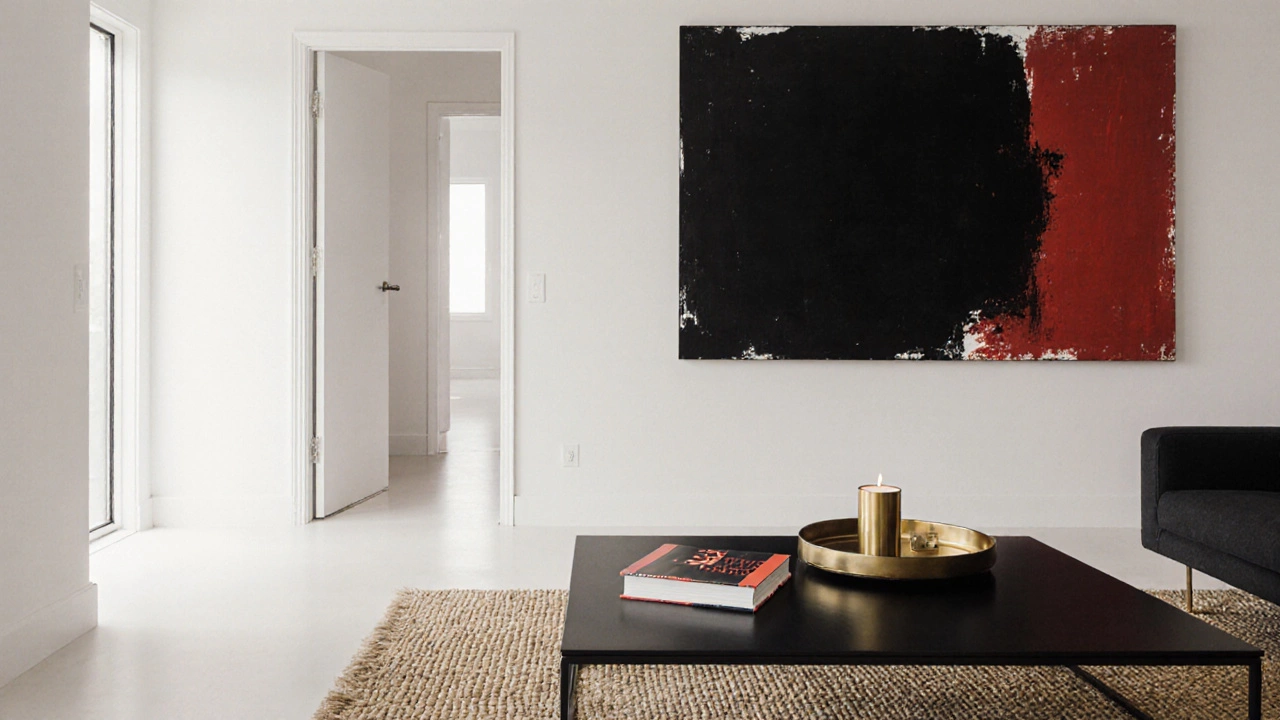
Color is the final spark
Once you’ve got your base-rug, paint, lighting, art-add color in small, strategic bursts. That’s where the pop happens.
Throw pillows are the easiest way. Pick two or three in colors that echo your rug or artwork. Not matching. Complementing. If your rug has blue and gold, try a cobalt pillow and a mustard one. Add a single bright orange cushion for contrast. The eye jumps from one to the next.
Plants help too. A tall fiddle-leaf fig or a trailing pothos in a terracotta pot adds life and a touch of green that makes even the darkest rooms feel fresh. Avoid plastic plants. Real ones, even if they’re low-maintenance, bring energy.
And here’s the trick: if you’re stuck, look at your favorite shirt or pair of shoes. What color makes you feel confident? Bring that into the room. Your living room should reflect you-not a magazine.
What doesn’t work
Don’t buy a whole new set of furniture just to ‘refresh’ the space. That’s expensive and rarely solves the real problem. The issue isn’t your couch-it’s how everything else around it behaves.
Don’t copy Pinterest boards. They’re curated, staged, and often impossible to replicate in a real home with kids, pets, or imperfect lighting. Find what works for your life.
Don’t ignore the door. The entrance to your living room matters. If it’s hidden behind a cluttered console table or a heavy curtain, the space feels closed off. Keep it open. Add a small side table with a lamp and one object-a vase, a book, a bowl of fruit. It signals, ‘This is welcome.’
Final checklist: Your 5-minute pop test
Walk into your living room. Ask yourself:
- Does the rug anchor the space, or does it look like it got lost?
- Are the walls a neutral backdrop, or do they add depth and mood?
- Is there at least one lighting source that isn’t the ceiling?
- Is there one piece of art that makes you pause?
- Can you see the texture of at least two materials without touching them?
If you answered ‘yes’ to three or more, you’re already there. If not, pick one item from this list and change it this week. That’s all it takes.
A living room doesn’t need to be perfect. It needs to feel like you. Bold, simple, and unapologetically yours.
What’s the quickest way to make my living room look more expensive?
Swap out cheap throw pillows for ones in velvet, linen, or wool. Add a large, high-quality rug that covers most of the floor. Replace basic table lamps with ones in brass, ceramic, or glass. These three changes cost under $300 but instantly elevate the space.
Can I make a small living room pop too?
Absolutely. Small rooms benefit from bold choices. Go dark on one wall to create depth. Use a large mirror to reflect light and make the space feel bigger. Choose low-profile furniture so the ceiling stays visible. A single oversized piece-like a big armchair or a dramatic lamp-draws the eye and distracts from the square footage.
Should I match my living room to the rest of the house?
No. Each room should have its own personality. Your kitchen can be bright and airy. Your bedroom calm and neutral. Your living room can be moody and dramatic. The connection comes from repeating materials-not colors. Use the same wood tone in your coffee table and dining chairs. Use the same metal finish on your lamps and cabinet handles. That’s cohesion without sameness.
What colors make a living room feel warm and inviting?
Warm neutrals like beige, taupe, and greige work as a base. Add richness with burnt orange, deep red, or olive green. Avoid cool grays unless you pair them with warm wood tones and golden lighting. The key is contrast: dark walls with light trim, or warm fabrics against cool stone floors.
How often should I update my living room decor?
You don’t need to update it often. Invest in timeless pieces-your sofa, rug, lighting. Change the small stuff every 1-2 years: pillows, throws, art, plants. That keeps the space feeling fresh without costing a fortune or requiring a full overhaul.

